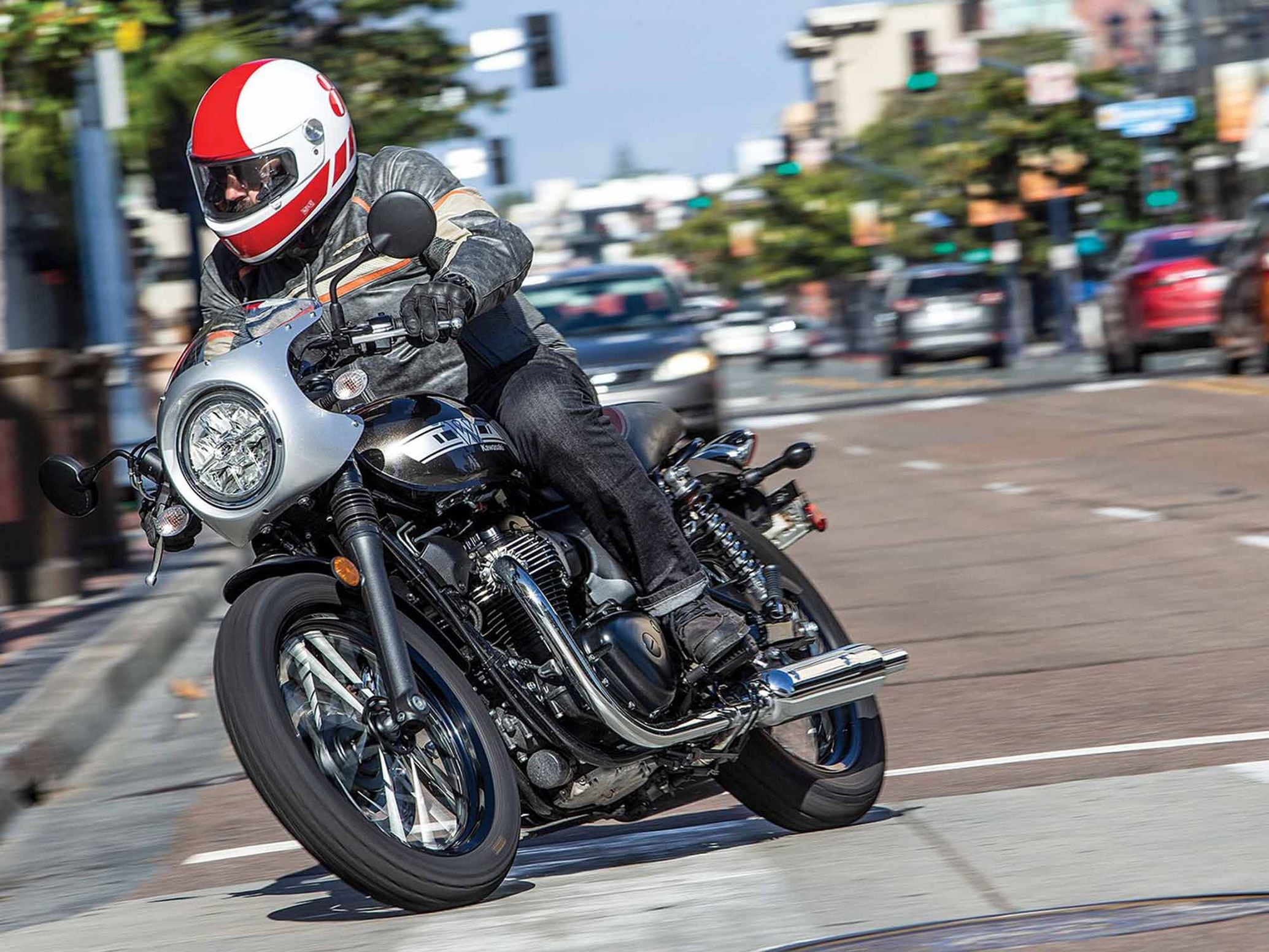Motorcycle Lessons Part 3
City cover and headlight weave
By Nick Ienatsch | November 10, 2020

In an ongoing effort to bring all riders to “expert” status as quickly as possible, we continue our Beyond the Classroom articles aimed at filling in the details surrounding riding’s main priorities. I realize there are other paths to expert riding status, such as covering many miles and learning along the way, but the reason I prefer instruction is because some riders never make it through the low spots in their learning curves. Good instruction makes the dips smaller.
That’s a good description of any successful education you undertake: Make me good in as short a time as possible. Mistakes in college, during tennis lessons, or while learning to weld don’t usually carry the same consequences as a mistake on a motorcycle—though heliarcing my tongue once was a bit edgy. The Champ School realizes that we create safe riders by creating excellent riders, so this series continues to chase that belief.
Ride in the Cover in the City
Why do we wear bright riding gear and ride with our lights on? So we can be seen by other motorists. We hope to catch their eye and attention long enough to live through our close encounter with them. This is a fine idea and should be pursued with gusto, but the weak spot is that we are relying on another person for part of our safety.
We count on our ability to see and predict traffic—to slow, steer, and accelerate our bikes well and at the right time. But how can we ease the reliance we sometimes must place on the motorist to do the right thing?
Think of riding in the “cover” of the city traffic around you.
Think of riding in the “cover” of the city traffic around you. If you leave a light at the front of the queue, don’t accelerate away from the group and approach the next green light all alone, hoping the left-turning driver picks you out as they try to beat the phalanx driving behind you. A better ploy is to stay just barely ahead of the group you just left the light with, using their “cover” to protect yourself against left-turning traffic at the next light.
Note that I feel it’s dangerous to be the slowest vehicle in traffic because the faster vehicles must make decisions about how to get past you. Ride in the traffic flow, perhaps slightly faster, but in this case, not fast enough to get out of their cover. “The car turned in front of me” has been said many times, but “the car turned in front of six cars I was riding around” is much less common.
RELATED:
Motorcycle Lessons Part 2
Motorcycle Lessons Part 1
Cover in Front, Cover in Back
Conversely, if you are at the back of the pack leaving a light, do not let the pack of cars get away from you because then you are alone as you approach the next left-turning motorist. The motorist has let the phalanx past and guns the accelerator, only to (maybe) see the rider toddling along alone and uncovered.
The more-common use of “rear cover” is to catch the group of cars—or even a single car—to help transport us through town on multilane streets. Think of it as running with a convoy. We pull out of a gas station alone and uncovered, but quickly catch up with the cover-providing convoy going our way.
As we take advantage of this “riding in the cover” idea, we begin to do something supremely important: We take significant responsibility for our in-town safety because we are not asking drivers to actually see and avoid just us. In fact, the other driver may never see us in and around our convoy, but we don’t care because that driver can’t hit us in our covered spot.
Encourage them to take notice. “What’s that rider doing?”
We place ourselves in the cover of larger, more-visible vehicles to be convoyed past the danger like a single fish in a large school sweeps past the fisherman’s hook. The hook is there and sharp, but cannot snag us.
Horizontal Light Movement
In this week’s theme of inner-city tricks lies a move I learned from my friend Don Cook as we rode in and around the Texas Hill Country. Don was my guide and I noticed that he would do a slight weave as we approached intersections with traffic waiting to turn across our path. Rather than hope the waiting driver could interpret our speed and the time it would take to reach them, Don added a horizontal headlight movement to catch the driver’s eyes and encourage them to take notice. “What’s that rider doing?”
We don’t care why we get noticed, we only care that we do get noticed. Bright clothing, extra lighting, fluorescent helmet, and now a horizontally weaving headlight. This Cook Swerve relies on us using some alternating handgrip pressure to do a quick or gradual weave. This is not huge steering inputs but small, quick-but-smooth pressure right and left to get our bike to veer slightly right and left. That veer helps to catch the eye of the driver we’re approaching and bring their attention to us. And we’re always covering the brake, right?
